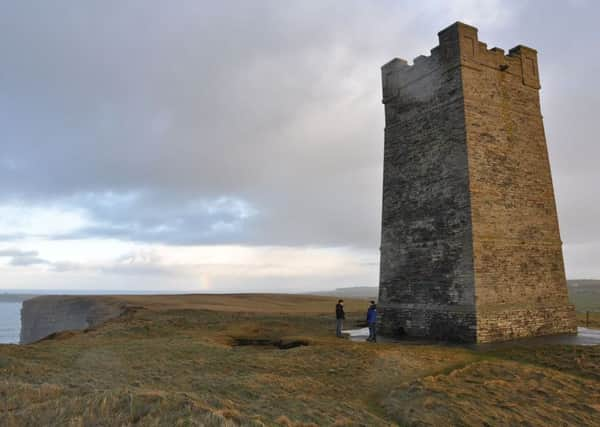100 men lost at sea with Lord Kitchener honoured


Volunteers working on a planned commemorative wall to the men lost on HMS Hampshire believe they have now identified all those who were killed, almost a century after the tragedy.
Earl Kitchener, Britain’s Secretary of State for War who was best known as the face of the “Your Country Needs You!” recruiting posters, was travelling to Russia for important talks to ensure the Tsar remained an ally in the war.
Advertisement
Hide AdIt was long believed that 643 men had died after the warship hit a mine, laid by a German U-boat, in stormy weather.
But recent research by Orkney historians Brian Budge and Andrew Hollinrake has discovered the names of 737 men who were actually lost, with many of the additional names being part of Kitchener’s own party.
The warship, which had fought at the Battle of Jutland, sank off the coast of Orkney on 5 June, 1916. There were only 12 survivors.
Ten years later, the Kitchener Memorial, a 48ft stone tower overlooking the site of the sinking, was unveiled on cliffs at Marwick Head, on the Atlantic west coast of mainland Orkney. It has a plaque which only makes brief reference to the men lost with Kitchener.
But those working for Orkney Heritage Society’s Kitchener and HMS Hampshire memorial project want to “better remember” all those lost by building an arc-shaped low wall, engraved with their names, alongside the memorial.
Mr Hollinrake, a project committee member, researched online and travelled from Orkney to spend hours digging through hundreds of files at the National Archives in London to arrive at a final figure of 737 men lost, including Kitchener.
Advertisement
Hide AdPart of his research involved untangling two family names which had been wrongly joined together.
Mr Hollinrake said: “Brian Budge had compiled a list of names from various sources including the Commonwealth War Graves Commission website. This included 723 members of the ship’s complement, and most of Kitchener’s party.
Advertisement
Hide Ad“But more than one source referred to other, previously unnamed civilian staff on the mission to Russia, suggesting that there were as many as 13 accompanying Kitchener. One of the party, Kitchener’s personal servant, was named by many sources as Henry Surguy-Shields.
“I discovered this was an error, and the name listed had been a misreading of a press bulletin naming Henry Surguy and “– Shields”, with a dash in place of Shields’ forename being mistaken for a hyphen, and so misread as a double-barrelled name.
“I visited the National Archives and, after sifting through several large volumes of documents, I found not only a detailed list of the sailors lost, but also a complete list of Kitchener’s party.
“This included William Shields, a former soldier and valet to Lieutenant Colonel Fitzgerald, Kitchener’s military secretary. We’re now fairly sure we have the complete list, bringing the total to 737.”
The restored tower and the commemorative wall are to be officially unveiled at events marking the centenary of the sinking next year.